WAVERLY — A rural mail carrier has pleaded to charges she stole home improvement store rebates from people on her route.
Kayeleen Luloff pleaded to a charge of theft of mail by a postal service employee on Monday in U.S. District Court in Cedar Rapids. Sentencing will be at a later date. The charge carries up to five years in prison and a $250,000 fine.
Luloff had been working for the U.S. Postal Service since 2021. Her routes included Waverly, Shell Rock and Denver.
In August and September 2022, she allegedly stole Menards rebate certificates that were mailed to six store customers. The rebates ranged in value from $25 to $283 and totaled $956, according to court records.
Luloff then used the rebate certificates when shopping in September 2022
By November 2022, authorities became suspicious. She denied taking the certificates during an interview with law enforcement. She was placed on leave and later terminated, court records state.
People are also reading…
Federal prosecutors charged her in May 2024 and waived indictment.
A brief history of American mail service
A brief history of American mail service
It’s no secret that the United States Postal Service has been more present in the minds of Americans during the last few years. Due to the COVID-19 pandemic, there has been a movement both to connect with others via a more meaningful medium than electronic communication, as well as to protect the lives and safety of frontline postal workers.
The USPS has a storied history beginning in Colonial America, when revolutionaries needed a way to communicate with each other without going through the British Royal Mail. The Royal Mail reserved the right to open and read any document or package it carried, squelching any illicit activities or plans early Americans may have had. As a result, the Constitutional Post was created in secret and was key to the Colonies’ victory over the British Empire in 1783.
Today, controversy surrounds the USPS, as it was politicized heavily during the 2020 presidential election regarding the service’s role in facilitating mail-in voting. Additionally, Postmaster General Louis DeJoy recently announced plans for the new postal vehicle fleet to be gas-powered instead of electric, causing a bout of criticism about the sustainability efforts of the USPS.
In honor of the long postal tradition in America, Stacker investigated the history of the U.S. Postal Service from Colonial times to present day using a variety of historical, news, and government sources.

1639: Richard Fairbanks’ tavern is designated as the official repository for mail in the American colonies.
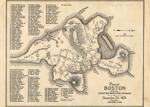
Richard Fairbanks’ tavern in Boston is widely considered the first post office in America, chosen in line with the English tradition of having mail drop-off locations at cafes and taverns. Fairbanks was also a well-known citizen and close friend of the Rev. John Cotton, who established the first church in Boston. At the time the tavern began collecting mail in 1639, letters were primarily used for communication between the Colonies and England and cost a penny each to send.
1710: The Queen Anne Act is passed
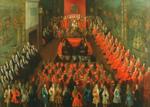
The Queen Anne Act, officially referred to as the British Post Office Act, was passed in 1710, but did not have an impact on the American postal system until 1711, when it instituted the Colonies’ first deputy postmaster general. The act also established uniform postage rates for various types of mail sent between America and Europe, one of many means by which the British government taxed the colonists.
1765: The Stamp Act is passed
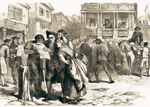
Passed by King George III, the Stamp Act of 1765 required most documents and paper goods in the colonies, including mail, to be marked with a stamp. This stamp showed that a direct tax had been paid for the goods, which had to be provided in English coin instead of Colonial currency. The profits from this legislation returned to the British government in order to help pay for British troops who had occupied the Colonies during the Seven Years’ War.
1775: William Goddard’s postal tenets are adopted by the Second Continental Congress
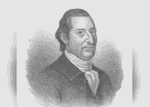
William Goddard was a printmaker in Rhode Island and was one of the most influential individuals in ideating the Constitutional Post in America. Goddard wrote to the Second Continental Congress, petitioning them to create a mail system free from the prying eyes of the government—the opposite of the British Royal Post. Though Goddard was proud to have his ideas adopted, the Congress bypassed him for the role of postmaster general, awarding it instead to Benjamin Franklin and making Goddard the surveyor of the post.
1780s & 1790s: More legislation is passed defining the U.S. Post Office Department
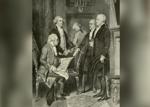
Effective in 1781, Article IX of the Articles of Confederation authorized the fledgling American government to build a postal system; however, the document provided no details about how to go about such a massive undertaking. The U.S. Constitution, ratified just a few years later in 1788, also mentions a national postal system run by the federal government, but is equally vague. It wasn’t until 1792 that President George Washington passed the Postal Act, which established the U.S. Post Office Department, a federal agency led by a postmaster general who sat on the president’s Cabinet.
You may also like: U.S. Army history from the year you were born
1802: A federal law is passed banning Black people from carrying mail for the Post Office Department
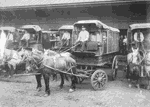
What is known today as the Haitian Revolution was a series of ultimately successful uprisings of enslaved Haitians against British and French colonizers from 1791-1804. The success of these uprisings stoked fear in the hearts of pro-slavery Americans who worried that enslaved people in the U.S. would also create a resistance movement. Though Black people had carried local and personal mail in the Colonies for decades, Postmaster General Gideon Granger was so concerned about a possible “general and united operation” that he convinced Congress to ban Black people from carrying the mail entirely.
1835: The American Anti-Slavery Society uses a technicality to send pro-abolition materials as newspapers via the Post Office Department
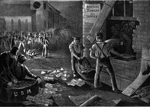
In 1835, slavery was alive and well in the U.S., but an abolitionist movement was growing, especially in the North. In order to distribute pro-abolition materials to the South, the American Anti-Slavery Society decided to distribute a newspaper instead of letters, as the Post Office allowed newspapers to be mailed at lower rates to maintain the freedom of the press. Unsolicited newspapers began showing up at the doors of Southern homes, causing a 3,000-person riot in Charleston, South Carolina, and ultimately pushing the postmaster general to declare that local postmasters could decide whether or not to censor certain newspaper material in order to avoid future violence.
1860-1861: The Pony Express is in operation
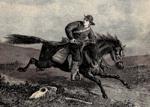
Though the Pony Express occupies an almost mythical position in American consciousness, the operation only lasted about 18 months and was a private endeavor. William Russell, William Waddell, and Alexander Majors began the Pony Express under the name of the Central Overland California & Pikes Peak Express Company in 1860 in order to demonstrate that mail could be delivered from St. Joseph, Missouri, to Sacramento, California, via a central overland route in less than 10 days. The enterprise was initially successful, but due to a number of carrier deaths from the dangerous terrain and the introduction of the telegraph, its assets were sold to Wells Fargo and the Overland Mail Company in 1861 and discontinued altogether shortly thereafter.
1863: The first Black employee of the Post Office Department is hired
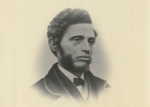
William Cooper Nell was a civil rights activist and historian who began his association with the mail when he was an apprentice at The Liberator, a pro-abolition newspaper in Boston. From there, Nell proceeded to work with Frederick Douglass on The North Star and advocated for the equal education of Black Americans throughout his life. He was not only the first Black employee of the Post Office Department, but also the first known Black employee of any U.S. federal government entity.
1873: Censorship legislation commonly known as the Comstock Act is passed
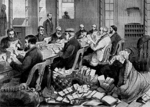
The Act for the Suppression of Trade In, and Circulation of, Obscene Literature and Articles of Immoral Use, also known as the Comstock Act, made it explicitly illegal to send any material through the mail that was deemed “obscene, lewd, or lascivious,” “immoral,” or “indecent.” Anthony Comstock, the legislation’s namesake, was the founder and head of the New York Society for the Suppression of Vice and named a special agent of the Post Office Department in order to enforce this law. Items that were seized under this legislation included documents about contraception and abortion, information from physicians about sexually transmitted infections, and anatomical illustrations, among others.
You may also like: U.S. Marine Corps history from the year you were born
1918: The Post Office Department begins airmail efforts

With the development of aviation technology during World War I and an ever-growing need to move the mail faster, the Post Office Department turned to planes for assistance. Its first flights launched on May 15, 1918, between Washington D.C., Philadelphia, and New York. The service was sold to private contractors in 1927 and provided the financial basis for today’s commercial passenger flight industry.
1960s: Mail backups are rampant across the U.S., causing the implementation of zip codes

By 1960, the Post Office was processing 63.7 billion pieces of mail annually, more than double what it had been in 1940. This huge influx of mail caused massive backups, especially in cities like Chicago, because it was being sorted by hand; however, the efficient mechanization of mail sorting needed addresses to be more specific and standardized. The ZIP code was created in 1963 to do just that, though it faced significant pushback from American citizens who were afraid their small town names would be reduced to just a number.
1970: Post Office Department employees go on strike, resulting in the first postal unions and the reform of the Post Office Department into the U.S. Postal Service
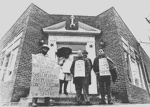
The 1970 postal strike was led by the newly established National Association of Letter Carriers and included nearly 200,000 postal workers. The mail slowed so much during the strike that the National Guard was brought in to sort and carry the mail. Ultimately, the NALC was able to negotiate a union contract, and Congress passed the Postal Reorganization Act, creating the United States Postal Service as a quasi-governmental organization that finances itself independently.
2006: The Postal Accountability and Enhancement Act is passed

The Postal Accountability and Enhancement Act overhauled many aspects of how the USPS operates financially. It requires the USPS to pay retirement benefits for employees 75 years in advance and maintains postal employees on an independent medical coverage system that is not integrated with Medicare like other government entities. The PAEA also has provisions that limit the Postal Service’s ability to raise prices on postal goods and expand into new revenue streams without congressional approval.
2020: The U.S. Postal Service experiences extreme mail slowdowns due to the COVID-19 pandemic

Due to the COVID-19 pandemic, Americans relied more and more on the work of the USPS, ordering more packages online, getting groceries delivered, and even receiving medications via mail. This influx in volume, along with infrastructure issues and staffing difficulties, spiraled into ongoing mail delays. These issues impacted the process of the 2020 Presidential election, as many voters—an estimated 46% of all votes cast—chose to vote by mail in order to avoid going to polling places in person and risking COVID-19 exposure or infection.
14 fun facts about your mail
1. Benjamin Franklin was the first postmaster general in U.S. history
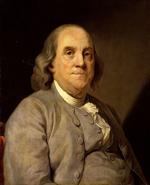
Before 1971, the postmaster general was a member of the president’s Cabinet.
2. The Postal Service processed and delivered 425.3 million pieces of mail per day in 2021.

3. There are more than 139,868 blue mail collection boxes in the U.S.

4. There are 31,247 Postal Service-managed retail offices.

5. The U.S. Postal Inspection Service is the law enforcement arm of USPS.

In 2021, inspectors carried out 5,141 arrests and 3,784 convictions for postal crimes, including mail theft and mail fraud.
6. The U.S. Postal Service has no official motto.

The quote often thought to be its motto — “Neither snow nor rain nor heat nor gloom of night stays these couriers from the swift completion of their appointed rounds” — is inscribed on the James A. Farley Post Office in New York City and comes from the ancient Persian historian Herodotus.
7. USPS generally receives no tax dollars, and funds itself through the sale of postage and other services.

8. Contrary to popular belief, the Pony Express was never officially a part of the U.S. Postal Service.

The official name of the Pony Express was the Overland Express Route.
9. The Breast Cancer Research semipostal stamp has raised more than $93.9 million for breast cancer research since 1998.
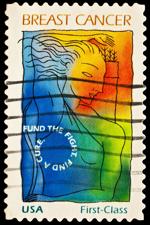
More than 1.09 billion stamps have been sold.
10. The Alzheimer’s semipostal has raised more than $1.2 million since 2017.

12. The United Kingdom’s iconic red mail collection boxes are called pillar boxes.

After the 2012 London Olympics, pillar boxes in the hometowns of gold medalists were painted gold.
13. The United Nations has an agency called the Universal Postal Union that coordinates postal policy internationally.

14. If it were a private sector company, the Postal Service would rank 43rd in the 2021 Fortune 500.

In the 2021 Global Fortune 500 list, it ranked 123rd.
Source link



